Welcome To Moda Fabrics!
Sewing small...
Sewing small...
While a 6" finished block with 1" x 2" flying geese isn't really that small, it is when you're used to working with bigger pieces and blocks.
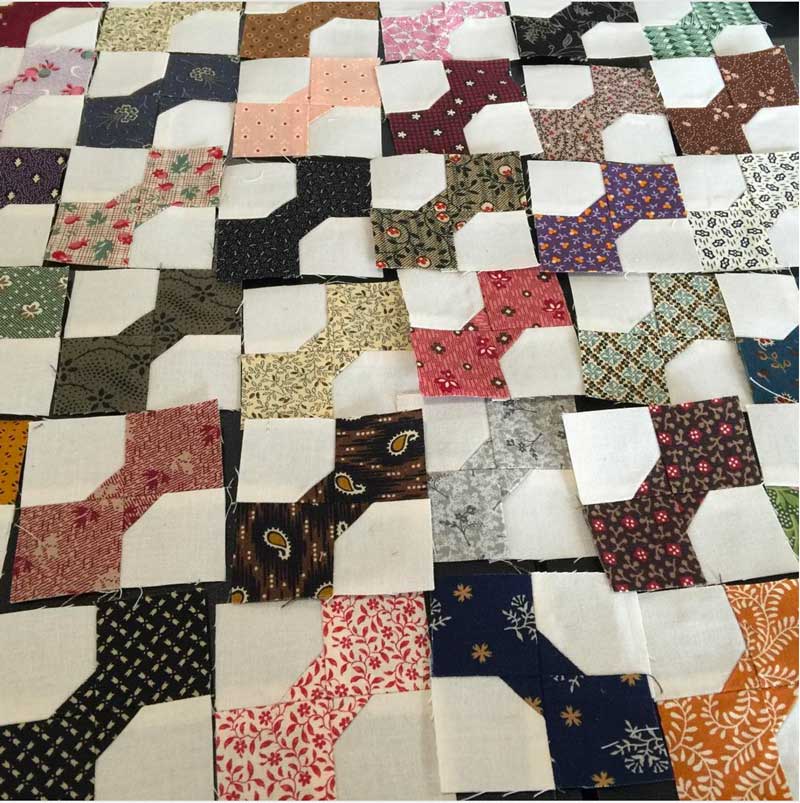
Those bow-ties are huge, aren't they? Actually, each one measures 2-1/2" x 2-1/2" and will finish at 2" x 2". Lisa Bongean. She knows all about tiny pieces - lots and lots of teeny, tiny pieces. This is her spectacular Bow Tie Quilt - before it was finished.
As part of the Blockheads sew-along, Lynne Hagmeier of Kansas Troubles has been answering some piecing questions as they come up on her blog and in the Blockheads Facebook Group. The questions have started at the beginning and over the course of the next few months, she'll be exploring piecing, appliqué, her layered patchwork and anything else she can think of. And you can think of! If you have a question, please feel free to ask - here or on Lynne's blog.
I confess to getting a little bit behind with the questions - quelle surprise! - so we'll get caught up today, and I'll share a few other tips that I use when piecing smaller.
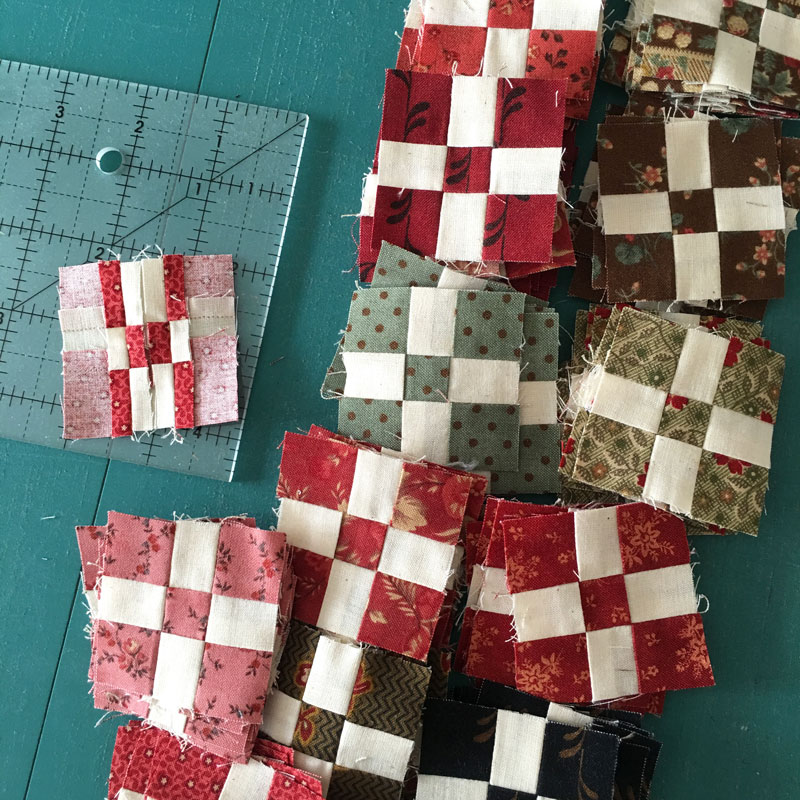
Some of the 1-1/2" x 1-1/2" finished nine-patches I started making several years ago for a project. (I think I still need 300 of them.)
Question No. 1 - Where do I stand on pre-washing fabrics?
For garments? Always. For quilting? Rarely. It's a matter of time and the fact that I use so many pre-cuts - Layer Cakes and Charm Packs. I used to wash everything, partly out of habit and partly because that's what garment-sewers do. But then I would be pressing each piece with starch or sizing - more on that in a moment - and it took forever! (And no, that's not a dramatic over-exaggeration.)
Then I started using charm packs - a lot of charm packs! - and pre-washing wasn't really an option. So I did a little research and figured out that many of the reasons we pre-wash fabrics didn't apply to quilting, that it had become a matter of personal preference.
Shrinkage? If the finished quilt top, batting and backing have no been pre-washed, they will shrink at about the same rate. The three layers have also been stitched together - quilted - to give it additional stability. Washing the quilt after not pre-washing the fabric also gives the finished that soft, puckered, quilt-y look that most of us love.
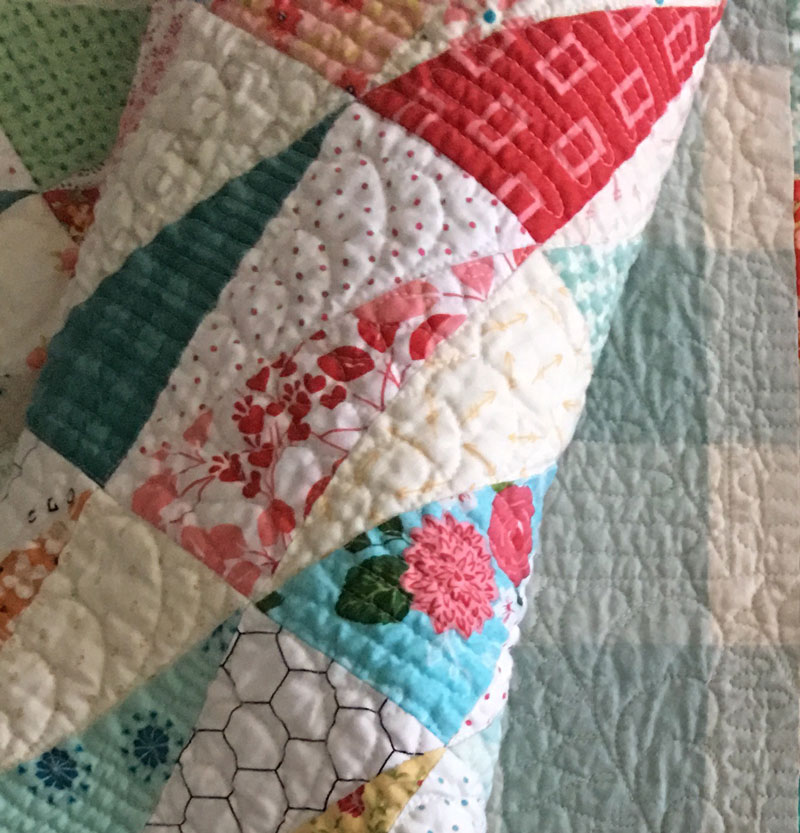
Color bleeding or running? While there can still be some excess dye in a fabric - especially a batik - most fabrics are finished in a manner that eliminates that. A Color Catcher dye magnet sheet is additional insurance against that happening.
So the only time I pre-wash fabric is when I'm going to make a garment. Which means I don't pre-wash much fabric.
Question No. 2 - Do I starch my fabrics before or during piecing?
Yes! Like Lynne, I prefer spray sizing because it seems to penetrate the fabric a little bit more. Though I will confess that sometimes the fabric is a little bit stiff because I have been a little heavy-handed with the sizing.
I have been experimenting again recently with Stay-Flo, the mix-it-up-yourself starch concentrate as it lets me dip and dry. Used at a 3:1 ratio of water to Stay-Flo, it's giving me the body I like without making it too stiff.
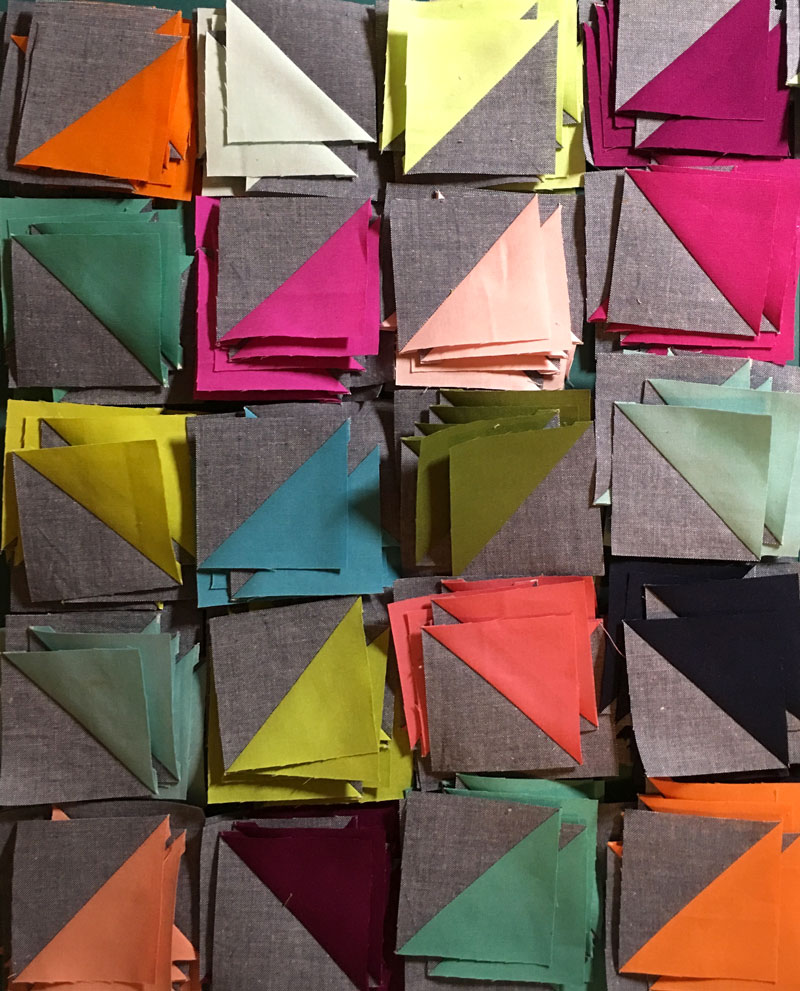
In addition to adding a crispness to the fabric, I like that this "prepping" step also pre-shrinks the fabric a bit. That's a good thing for me since I press with steam. A lot of steam.
Drying? I recommend a laundry-drying rack made of plastic or plastic-coated metal. You can find mine in the bathtub of the spare bathroom. To make it easier to use with layer cake, charm squares and scraps, I used small zip-ties to join four cooling racks together to make a rectangle that I simply lay on top of the rack. The squares-pieces are dipped or sprayed and layered, then left to dry. (In fact, I have fabric drying as you read this... Market is coming.)
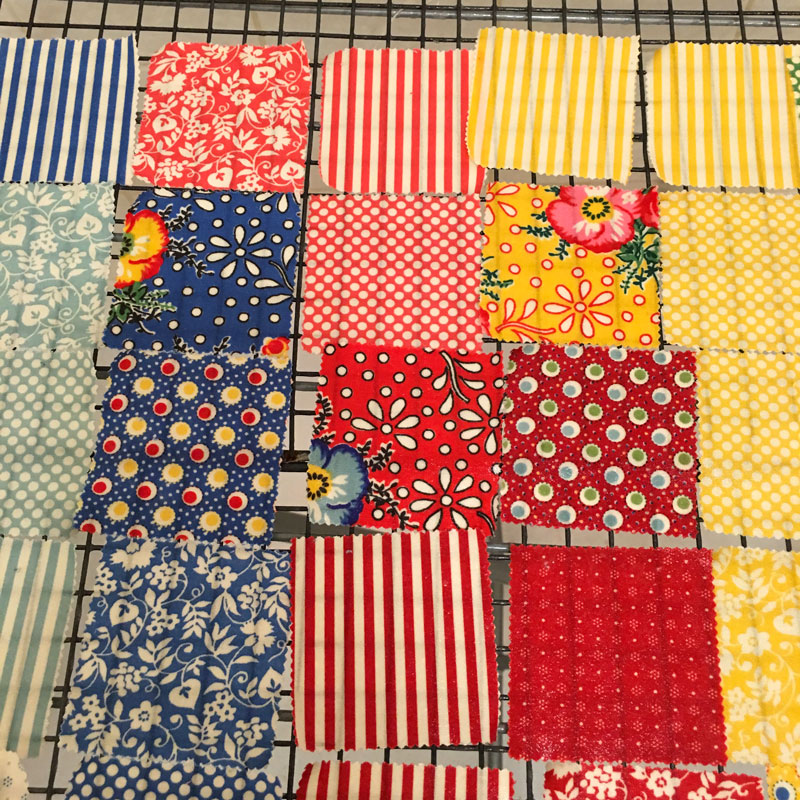
Merry Go Round by American Jane - mini charm squares. Not pre-washable.
Seam allowance. The smaller the piecing, the more important it is to have an accurate seam allowance. Simply put, there's less leeway for easing and fudging. My favorite tool for checking and marking the proper scant 1/4" seam allowance is still Perkins Dry Goods Perfect Piecing Seam Guide.
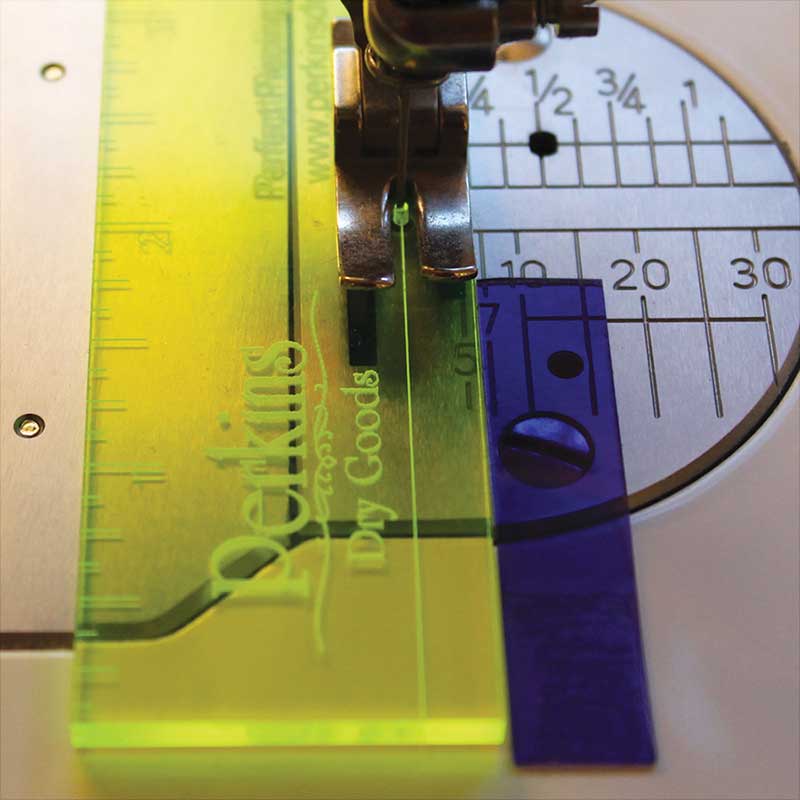
Best. Tool. Ever. Every sewing kit needs one.
Stilettos & Awls. Another tool that helps me when accuracy is required is a stiletto - or any long point-y thing that helps guide the piece under the presser foot and keep it straight. If putting a piece of metal near the needle makes you nervous, there is That Purple Thang.
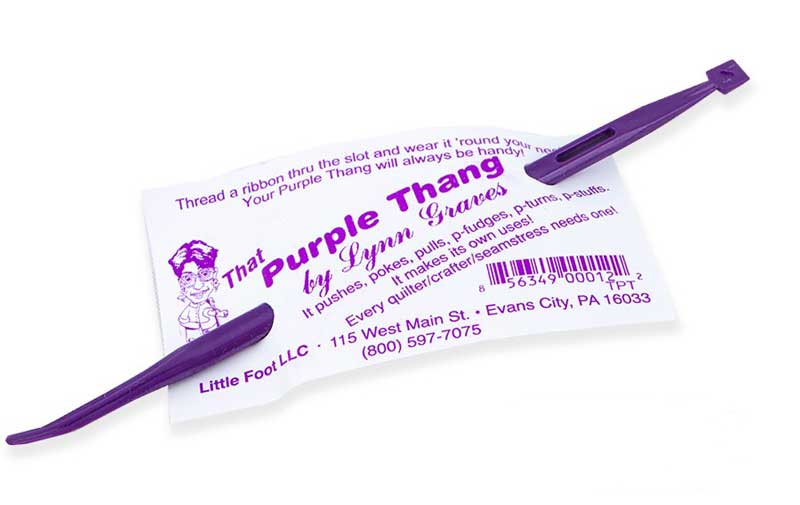
There are also bamboo stilettos - I like this one from Collins. A good friend swears by the 4-in-1 Essential Sewing Tool from Alex Anderson and C&T.
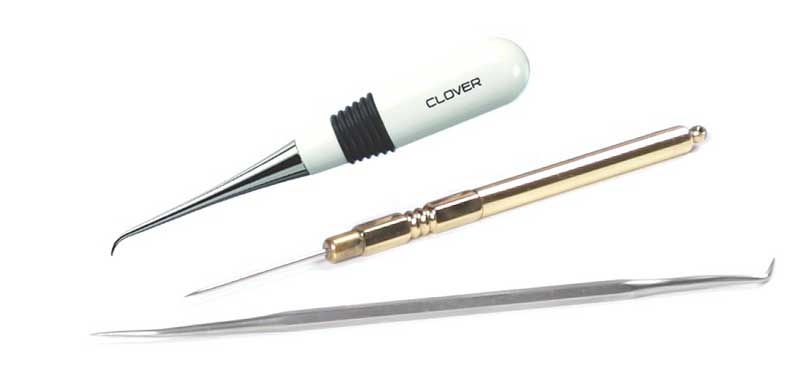
While these are usually called stilettos, they're also called awls. The Clover Curved Awl at the top is what I use when I reach for this kind of tool.
Do you like piecing small blocks? Have you got any tips to share? Or any questions?
Happy Tuesday!

Comments